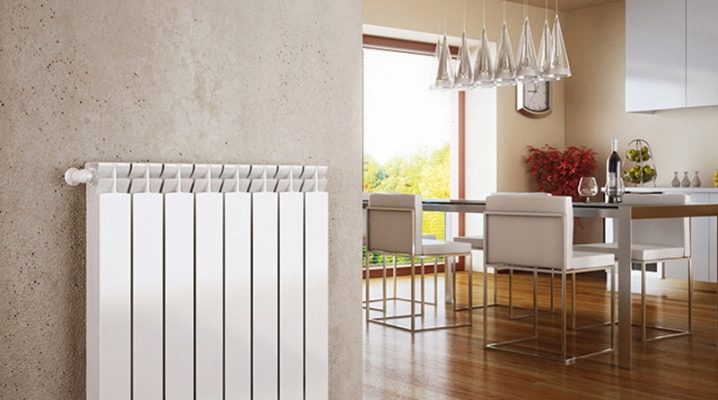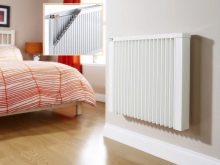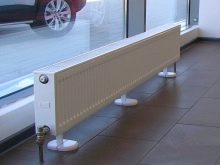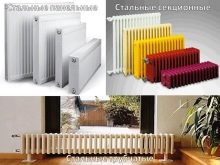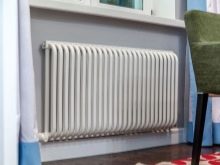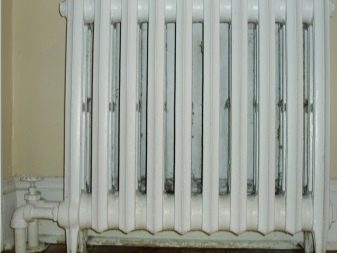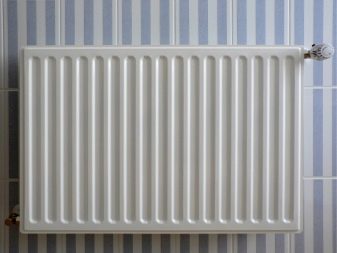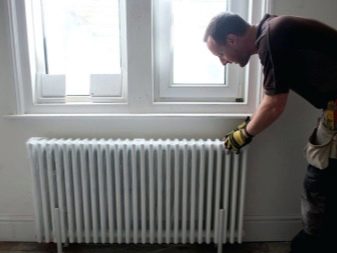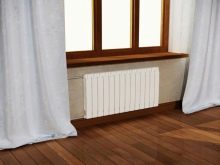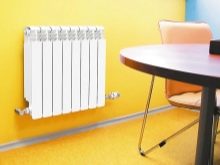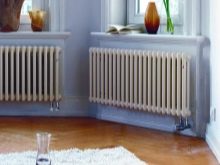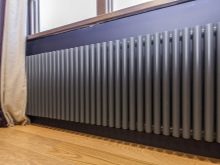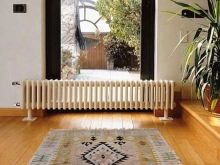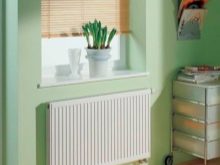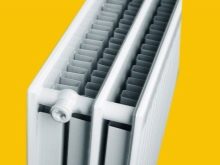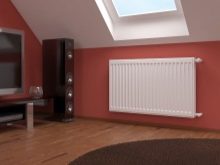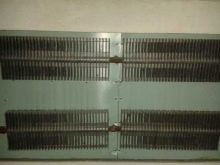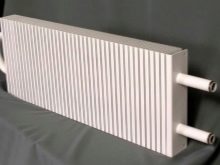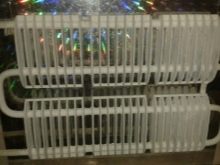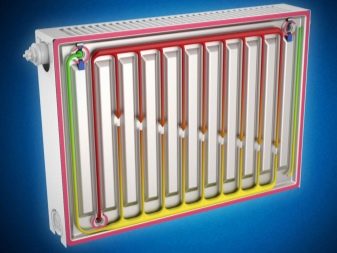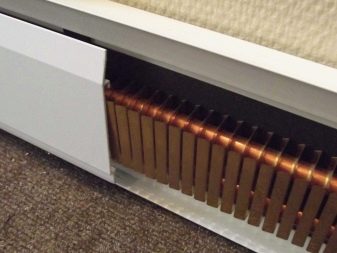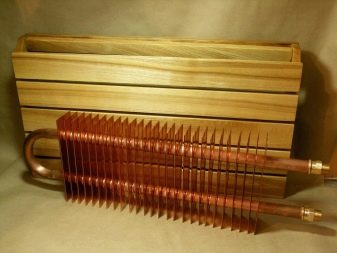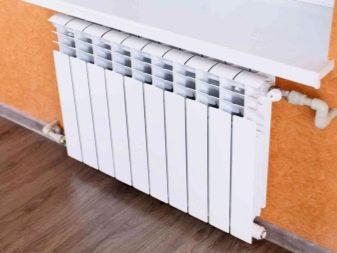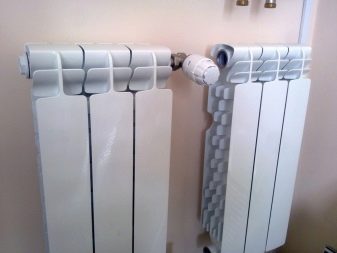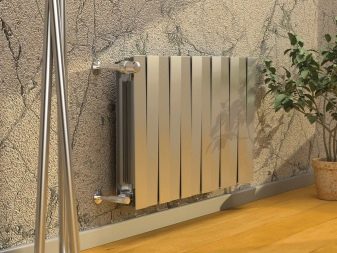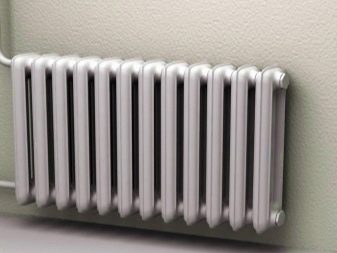Metal radiators: types and recommendations for selection
The radiator is an important element that is present in the heating systems of each room. Its main task is to uniformly dissipate thermal energy in the air. Basically, metal radiators are used for heating both private houses and apartments.
This is due to the fact that it is the metal radiators (batteries) that have high rates of energy saving. and are able to quickly accumulate a large amount of heat. However, in order for the use of metal radiators in the heating system to be economically beneficial, they must be properly selected, taking into account such factors as the type of heating used, which is necessary for optimal heating of the room and the level of heat transfer from the battery.Therefore, before using metal batteries, it is necessary to thoroughly familiarize themselves with their types and to study recommendations for choosing these products.
Main characteristics
Metal radiators used in heating may differ among themselves both in their design features and in the type of material from which they were made. When choosing a battery, it is necessary to pay attention not only to its cost and appearance, but also to technical indicators.
First of all, during the selection of the metal heater (radiator), it is necessary to verify its compatibility with the heating system, in which it will be used in the future. For this, it is necessary to pay special attention to the type of heat transfer media that are actively used in the heating system, as well as to the indicators of the maximum allowable pressure, which is necessary for the full and correct operation of the battery.
When choosing a metal heater, it is recommended to pay special attention to the indicators of its corrosion resistance. To do this, take into account the properties of the materials from which it is made.Iron models have a sufficiently long service life, especially if they are flat variants.
Design features
By their design features, metal heaters have cardinal differences between themselves. Some of them have the form of 2 steel sheets, which are equipped with special stamped grooves. These recesses provide unhindered circulation of the coolant in the battery. Often used heaters consisting of steel sheets, which are equipped with a special imprint, reminiscent of the letter "P". Sheet thickness is able to reach 2 mm.
The design of metal radiators is as simple and discreet as possible. To make metal radiators look more attractive, they need to be additionally equipped with special decorative screens.
All types of metal heaters allow you to control the temperature in the room.
They also possess such technical indicators as:
- increased energy savings;
- increased efficiency;
- high heat emission;
- the possibility of using the coolant during heating of the premises of small volumes;
- the possibility of selecting the necessary battery, taking into account its capacity;
- strict design.
Due to the fact that the metal heater has a smooth surface, it is perfectly amenable to cleaning and damp cleaning. Due to the presence of a removable top box, it is also possible to easily clean the dirt from the inside of the device from dirt and dust.
Sectional
Sectional type heaters consist of several special sections that play the role of heating elements. These sections are connected thanks to the thread. In such a heater, the sections are combined into a special system with manifolds, which are represented by the upper as well as lower horizontal channels.
The main advantage of section type heaters is that during their work, you can independently change the number of sections used. This feature allows you to regulate their heat output, as well as adjust the size of the battery.
Tubular
The tubular heater has the form of a section consisting of tubes welded in the form of an “accordion”.Several of these tubes, in an amount of at least 2 pieces, are placed in a perpendicular position with respect to the collectors. In some models of such radiators, the tubes in several rows can be parallel to the collectors.
Tubular heaters have their own advantages and disadvantages.
Their advantages include:
- good heat dissipation;
- resistance to sudden pressure drops;
- attractive and aesthetic appearance.
Also, a tubular heater can easily withstand even high pressure, which is often used in heating systems to ensure a more efficient circulation of the coolant. However, the disadvantage of such heaters is their high cost, as well as excessive susceptibility to the appearance of corrosion.
Panel
Panel heaters are made of special heating elements (panels), which, as a rule, consist of 2 steel sheets. The sheets are equipped with special channels of the vertical type, which ensure uninterrupted circulation of the coolant.
To increase the heat transfer characteristics of the battery, special fins are additionally welded to the back of its panel. Panel heaters can be equipped with one or several panels (no more than 3 pieces).
The advantage of panel heaters is that they have high heat transfer rates, heat up in a short period of time. They also have small dimensions and reasonable price. However, a significant flaw in them is that they are very sensitive to the effects of hydraulic shocks that may occur in the heating system. Also, radiators of this type are not suitable for heating systems, during operation of which high pressure is used.
Lamellar
Lamellar radiators are a special heat exchanger, which is further enhanced by the plates. Plate heaters can withstand strong pressure up to 40 atmospheres. Convection rates for batteries of this type are significantly less than those of panel-type radiators, however, this disadvantage is fully compensated by their high heat transfer rates.
The main task of the plates, which is equipped with a battery, is to increase its level of heat transfer, as well as the parameters of thermal conductivity. Therefore, quite often radiators of this type are called convectors. They can be used for heating rooms with a large heated area. Quite often they are used for heating commercial objects, for example, warehouses or offices.
Materials
Steel is a very common material from which radiators are made, which are widely used mainly in heating systems of private houses. Steel radiators have excellent heat transfer performance, so you can easily regulate the temperature of the air inside the room. In addition, in the construction market, steel batteries are represented in a fairly wide range.
However, a significant disadvantage of radiators made of steel is their instability to corrosion. They are also not suitable for heating, which uses too high a pressure to circulate the coolant. Another disadvantage of steel batteries isthat they are very sensitive to the effects of water hammer. Simply put, when strong water hammer occurs, the steel radiator may burst or swell.
In the manufacture of the contour of copper radiators used only seamless copper pipe. The diameter of the copper pipe can reach 28 millimeters. Usually such a copper pipe is additionally equipped with special fins, which is made of aluminum or copper. Decorative protection, which is equipped with a copper radiator, can be made of thermoplastic, wood or composite materials.
The battery, made of copper, has high heat transfer performance. and is able to provide efficient heating even for large rooms. The heat conductivity of copper is several times higher than the thermal conductivity of a non-ferrous metal such as aluminum, and 6 times higher than the level of thermal conductivity of metals such as cast iron or steel. Due to the fact that the battery, made of copper, has low rates of inertia, it is able to provide rapid heating of the room.
Aluminum heaters are very demanding on the quality of water used in heating.Therefore, it is preferable to install them in homes or buildings that are equipped with individual heating.
The main advantages enjoyed by aluminum batteries include:
- high heat transfer rates;
- small weight;
- durability;
- small size.
However, aluminum radiators have one major drawback. They are extremely unstable to the effects of corrosion, which can appear on the internal parts of the heaters from constant contact with water. Aluminum radiators are extrusion and sectional types. The most resistant to external mechanical impact or the appearance of water hammer are aluminum heaters of extrusion type.
Bimetallic radiators are the best option for use in urban central heating. They consist of a collector, which is a steel pipe, and a body made of aluminum. The circulation of the coolant is carried out on the collector, which gradually heats the aluminum battery case. Bimetallic radiators have the same advantages as steel and cast iron batteries.They have a good level of heat transfer, have a concise design that will look great in various styles of interior space.
Batteries made of cast iron are an obsolete option, which is usually used in homes equipped with central heating. The main advantage of cast iron is that it is very resistant to corrosion. Therefore, in most cases, cast iron radiators are used in heating systems with a very polluted coolant.
Also, the advantages of cast iron batteries should be attributed to their low cost and durability. However, cast iron is a very heavy metal, so the batteries made from it have a lot of weight, which significantly complicates their installation and installation in the heating system. In addition, cast iron radiators have poor heat transfer performance and a very long warm-up period.
Which is better to choose
When choosing the type of heater, first of all, you need to pay attention to the size of the heated room and the type of heating system they are equipped with.Not all types of radiators that exist today can be installed in private homes or apartments. For example, in the apartment should not use a steel heater. This is due to the fact that it has a low operating pressure range (up to 8 atmospheres), while the operating pressure in centralized heating systems reaches about 10 atmospheres.
It is best to use bimetallic radiators or batteries made of cast iron in apartments that are equipped with a centralized heating system. This is due to the fact that they are highly resistant to corrosion and have a very long period of operation. In a private house, you can use any type of radiator. The main thing is to correctly calculate its required power in the used heating system.
How to choose a good heating radiator for an apartment, see the following video.
